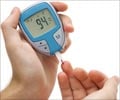Background
The main objective of this study is to keep the risk of complications in patients with diabetes mellitus (microvascular and macrovascular both) at minimum by keeping blood pressure, blood glucose and lipid profiles at normal level.In a recent study at Cardiff University, United Kingdom, survival as a function of HbA1c in people with type 2 diabetes was assessed. Results of intervention studies in patients with type 2 diabetes led to concerns about the safety of aiming for normal blood glucose concentrations.
Methods
For the study, two groups of patients, aged 50 years and older, with type 2 diabetes were generated from the General Practice Research Database (GPRD), UK from November 1986 to November 2008. For the first group, researchers identified 27,965 patients whose treatment had been increased from oral monotherapy to combination therapy with the help of oral blood-glucose lowering agents. Second group comprised of 20,005 patients who had switched to insulin. During the study, patients with diabetes secondary to other causes were not included. The primary outcome was all-cause mortality. Important confounding factors were age, sex, smoking status, cardiovascular risk, cholesterol, and general morbidity. For these factors Cox survival models were adjusted accordingly.
Findings
For combined groups, in comparison with the glycated haemoglobin (HbA1c) decile and the lowest hazard (median HbA1c 7·5%, IQR 7·5—7·6%), the adjusted hazard ratio of all-cause mortality in the lowest HbA1c decile (6·4%, 6·1—6·6) was 1·52 (95% CI 1·32—1·76).
In the highest HbA1c decile (median 10·5%, IQR 10·1—11·2%) it was 1·79 (95% CI 1·56—2·06). Results indicated a U-shaped association with the lowest hazard ratio at an HbA1c of about 7·5%. HR people who were given insulin-based regimens (2834 deaths) versus those who had combination oral agents (2035) were 1·49 (95% CI 1·39—1·59).
Interpretation
The results indicated that low and high mean HbA1c values were associated with increased all-cause mortality and cardiac events. Researchers also suggested that diabetes guidelines might need revision to include a minimum HbA1c value.
Reference:
http://dspace.dial.pipex.com/town/estate/aquc35/book/lancetjshape2010.pdf
http://www.thelancet.com/journals/lancet/article/PIIS0140-6736(09)61969-3/abstract
Source-Medindia
|
|
Type 2 Diabetes - Slideshow |












